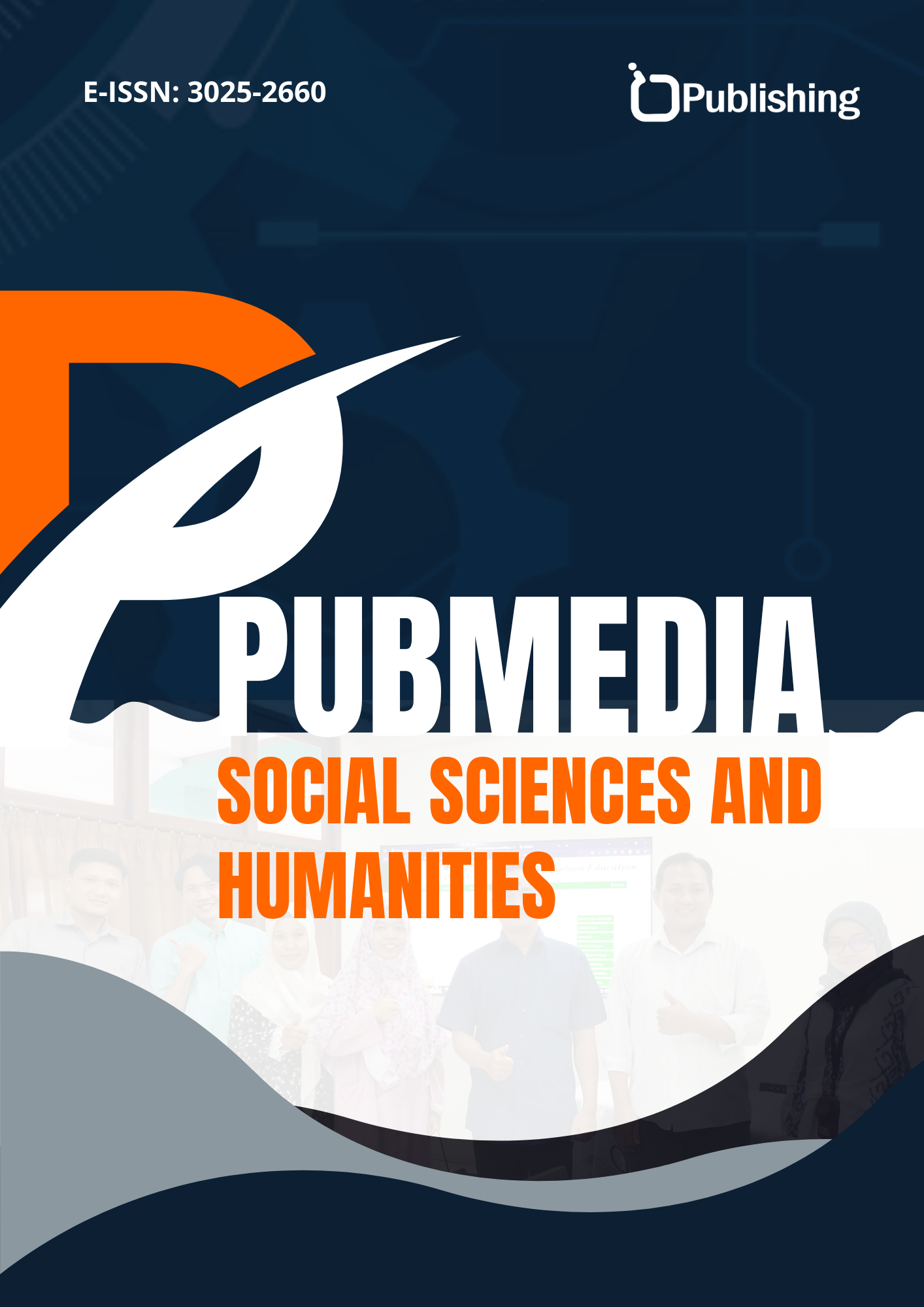The Influence of Social Media on the Cultural Identity of the Millennial Generation: Indonesian Case Study
DOI:
https://doi.org/10.47134/pssh.v2i1.241Keywords:
Social Media, Cultural Identity, Millennial Generation, Indonesia, Digital LiteracyAbstract
Results show that social media has a dominant role in shaping the cultural identity of the millennial generation. There have been significant changes in language use, with many English terms and phrases being used in everyday communication. Global fashion trends spread through social media are also widely adopted, leading to a mix of traditional and modern clothing styles. In addition, social values such as freedom of expression and gender equality are more accepted and adopted by the millennial generation. Social media plays a dual role in cultural preservation and change. On the one hand, this platform enables the preservation of local culture through online communities that focus on specific cultures. On the other hand, strong foreign cultural influences can erode local cultural elements. Therefore, digital literacy and critical awareness in using social media are important to maintain a balance between adopting global culture and preserving local culture.
References
Andhini, G. K., & Ramadhan, A. S. (2023). The Role of Social Media Influencer towards Fashion Brand Sales for Indonesia’s Young Consumers. 2023 8th International Conference on Business and Industrial Research (ICBIR), 155–160. https://doi.org/10.1109/ICBIR57571.2023.10147431
Aref’ev, M. A., Zykin, A., Vinogradova, S. A., & Fedorov, M. V. (2022). Sociocultural identity: judgments, definitions and modern problems. Социодинамика, 8, 1–13. https://doi.org/10.25136/2409-7144.2022.8.38544
B. E. Saaida, M. (2023). The Role of Culture and Identity in International Relations. EAST AFRICAN JOURNAL OF EDUCATION AND SOCIAL SCIENCES, 4(1), 49–57. https://doi.org/10.46606/eajess2023v04i01.0255
Case Study Approach to Conducting and Designing Qualitative Investigation for Business Researchers. (2022). American Journal of Arts and Educational Administration Research, 1. https://doi.org/10.58314/097878
Dr. Abhishek Kumar Singh. (2022). A Study of Popular Culture and its Impact on Youth’s Cultural Identity. The Creative Launcher, 7(6), 150–157. https://doi.org/10.53032/tcl.2022.7.6.16
Hizliah, S. (2022). Menumbuhkan Minat Literasi Generasi Menghadapi Tantangan Zaman Dalam Perspektif Al-Qur’an. Syntax Idea, 4(12), 1767–1777. https://doi.org/10.46799/syntax-idea.v4i12.2065
Husna, R., & Purwaningtyas, F. (2023). Analisis Perilaku Penelusuran Informasi pada Generasi Milenial Dalam Memenuhi Kebutuhan. El-Mujtama: Jurnal Pengabdian Masyarakat, 3(3), 932–936. https://doi.org/10.47467/elmujtama.v3i3.3081
Md Alui, S. E. A., Khan, M. P., Shafei @ Safri, N. A., & Mohd Nordin, N. (2022). Audio Visual Digital Preservation Strategies: A case study in National Broadcasting Agency. Environment-Behaviour Proceedings Journal, 7(SI10), 47–51. https://doi.org/10.21834/ebpj.v7iSI10.4100
Munabiah Lestari, M., & Saidah, M. (2023). Penanganan Hoaks Keagamaan di Sosial Media Melalui Literasi Digital Milenial. Meyarsa: Jurnal Ilmu Komunikasi Dan Dakwah, 4(1), 68–94. https://doi.org/10.19105/meyarsa.v4i1.6764
Oktaviani, S., Shalsabilla, R. Y., Nurhalyza, F., & Sitinjak, C. (2023). Improvement of Millennial Generation Mental Health Due to Pandemic Effects. Journal of Social Science, 4(2), 541–546. https://doi.org/10.46799/jss.v4i2.549
Pronchev, G. B. (2022). TRANSFORMATION OF SOCIAL COMMUNICATION MODELS IN THE DIGITAL AGE. Moscow State University Bulletin. Series 18. Sociology and Political Science, 28(4), 122–138. https://doi.org/10.24290/1029-3736-2022-28-4-122-138
Radwan, M. (2022). Effect of social media usage on the cultural identity of rural people: a case study of Bamha village, Egypt. Humanities and Social Sciences Communications, 9(1), 248. https://doi.org/10.1057/s41599-022-01268-4
Rayyan, F. A. (2022). The Influence of Social Media for Millennials in the Digital Age. Jurnal ISO: Jurnal Ilmu Sosial, Politik Dan Humaniora, 2(2). https://doi.org/10.53697/iso.v2i2.966
Rizkalla, N., Lestari, E. D., Othman, N., Joremi, L., & Arinto, B. (2023). Elucidating the Factors Affecting Entrepreneurs’ Intention to Adopt Social Media in Their Business: A Perspective from Indonesia. International Journal of Professional Business Review, 8(5), e01413. https://doi.org/10.26668/businessreview/2023.v8i5.1413
Safori, A., Rahman, N. A. B. A., & Ahmad, A. K. (2023). Editorial: Media Content in the Digital Age. Studies in Media and Communication, 11(3), 1. https://doi.org/10.11114/smc.v11i3.5971
Saputra, D., Damayanti, V. S., Mulyati, Y., & Rahmat, W. (2023). Expressions of the use of slang among millennial youth on social media and its impact of the extension of Indonesia in society. BAHASTRA, 43(1), 21–40. https://doi.org/10.26555/bs.v43i1.325
Sinha, S. (2022). An Analytical Study of the Roles of Social Media and the Social Development in India (pp. 87–99). https://doi.org/10.1007/978-981-19-2984-7_8
Urse, E., & Tasențe, T. (2023). The role of Social Media in the development of the communication strategy of public institutions. Ars Aequi, 12, 280–288. https://doi.org/10.47577/10.1234/arsaequi.12.1.232
Wilska, T.-A., Holkkola, M., & Tuominen, J. (2023). The Role of Social Media in the Creation of Young People’s Consumer Identities. SAGE Open, 13(2), 215824402311770. https://doi.org/10.1177/21582440231177030
Yuwono, I. (2023). Use of Social Media in Building Brand Identity Among Young Entrepreneurs. KnE Social Sciences. https://doi.org/10.18502/kss.v8i12.13734
Zafar, F., & Sarwar, A. (2021). Influence of fashion blogs on technology-driven behaviour of millennial. International Journal of Fashion Design, Technology and Education, 14(3), 366–374. https://doi.org/10.1080/17543266.2021.1958927
Zhu, H. (2023). How Social Media Marketing Strategies Drive Brand Development in the Digital Age? BCP Business & Management, 38, 2047–2053. https://doi.org/10.54691/bcpbm.v38i.4031
Downloads
Published
How to Cite
Issue
Section
License
Copyright (c) 2024 Maydiyan Pangesti, Ade Siti Khaeriah, Eko Purwanto, Aura Dwi, Azhara Nur, Alexa Syafitri, Mefianda Shiva, Adinda Permata, Nur Intan, Hajar Azhari

This work is licensed under a Creative Commons Attribution-ShareAlike 4.0 International License.






